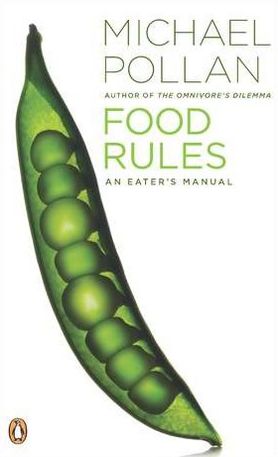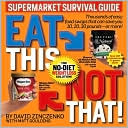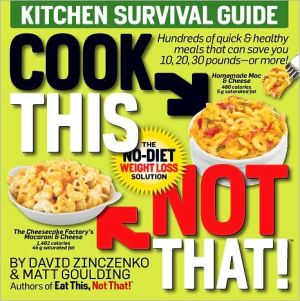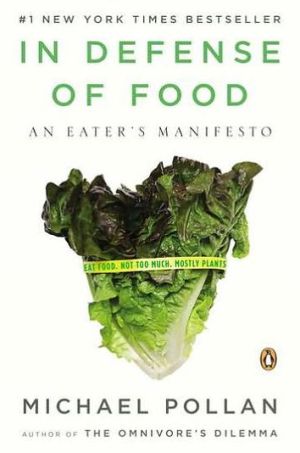Baby Love: Healthy, Easy, Delicious Meals for Your Baby and Toddler
Finally, the must-have cookbook is here for the millions of busy parents who have taken on a healthier approach to eating—less processed, more organic—and who want to feed their little ones easy-to-make, cost-effective, completely nutritious and delicious meals.\ With more than sixty gourmet-inspired recipes and dozens of Chef Geoff’s tips for quick and nutritious preparation, parents everywhere will be in on the Baby Love secret: that making fresh baby food is pretty simple, even if you’ve...
Search in google:
Finally, the must-have cookbook is here for the millions of busy parents who have taken on a healthier approach to eating—less processed, more organic—and who want to feed their little ones easy-to-make, cost-effective, completely nutritious and delicious meals.With more than sixty gourmet-inspired recipes and dozens of Chef Geoff’s tips for quick and nutritious preparation, parents everywhere will be in on the Baby Love secret: that making fresh baby food is pretty simple, even if you’ve never cooked a day in your life.Learn how to make two weeks worth of Baby Love meals in less than one hour per week, at a fraction of the cost of jarred baby food. Say good-bye to bland and processed and hello to fresh and scrumptious!BABY LOVE recipes include: Pom-Pom Apple*Peach and Apricot Oatmeal*Tropical Smoothie *Creamy Butternut with Nutmeg*Very Gouda Grits*Norah’s Brain-Booster Zucchini Muffins*Made with Love…Baby Love
Baby Love - Chapter 1 Getting Started\ Babies are ready to begin eating solid foods at four to six months of age. At this time almost all babies can learn to eat from a spoon. Most start with rice cereal mixed with breast milk or formula.\ If all is going well, check with your pediatrician about beginning to feed your munchkin simple pureed fruits or vegetables. Some pediatricians recommend you start with vegetables first to avoid developing a sweet tooth. However, the American Academy of Pediatrics states that “there is no evidence that your baby will develop a dislike for vegetables if fruit is given first. Babies are born with a preference for sweets, and the order of introducing foods does not change this.”\ New foods should be introduced one at a time. Wait at least two to three days before starting another to make sure your child is not allergic. Watch for any allergic reactions such as diarrhea, rash, or vomiting. Once, our son, Henry, broke out in a facial rash. We called the doctor, who suggested it might be the tomatoes in the Bolognese! Sometimes infants don’t like the acidity in tomatoes. The lesson: stop the food and then check with your doctor about the reaction.\ We also made the decision to introduce new foods at breakfast or lunchtime rather than at dinnertime. In case the twins got a tummyache or gas at least it was during the day. You don’t want a gassy baby keeping you up all night!\ Within a few months of starting purees, your baby should be enjoying all sorts of fruits, vegetables, and meats. You know the saying, “Variety is the spice of life!” There is no better time to introduce these healthy foods.\ BABY LOVE. Copyright © 2010 by Norah O’Donnell and Chef Geoff Tracy. All rights reserved.
\ Children's Literature - Leigh Geiger\ The authors' intent was to provide recipes for preparing infant and toddler food that is nutritious and economical. All of the recipes accomplish this goal with fresh fruits and vegetables, whole grains, or legumes as the basis for most recipes. Based on nutrition advice from a Ph.D., these low-salt, low-fat, high fiber menus with an abundance of vitamins and minerals from fresh food sources are definitely nutritious. The authors also stress the efficiency of cooking large batches and freezing most of the food. They claim that you can prepare two weeks of food for one child in less than an hour using their recipes. The recipes are arranged by food type with three sections on fruits, veggies and protein/grains. This is obviously geared toward the total novice—nearly all of the fruit and vegetable entries follow the same basic plan—cook the ingredients in water and then puree. Not a very novel or difficult concept; however, it is repeated for fifty of the eighty-three pages of children's dishes. This could have been provided as a basic recipe with variations in a much shorter format. The section on proteins, grains and legumes provides a more varied diet for toddlers; it includes, e.g., meatballs, soup, and pasta. There is also a small section of six recipes for parents. All recipes are clearly written with some full color photo illustrations. Additional nutrition and cooking advice includes safe food storage, sanitation, basic kitchen equipment, and cooking fundamentals. Reviewer: Leigh Geiger, Ph.D.\ \








